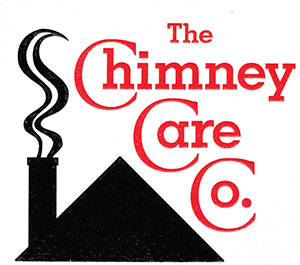Chimney Damper Services Near Cincinnati – Trust The Chimney Care Company for Repairs & Installs
A properly working damper plays an essential role in how well a chimney system performs. It regulates airflow, helps prevent energy loss, and offers a layer of protection from rain, debris, and wildlife. But not all dampers are created equal and when one fails, it can lead to inefficiencies, poor combustion, and unwanted moisture in the system. The Chimney Care Company installs, repairs, and replaces chimney dampers throughout Greater Cincinnati to help homeowners get the most out of their fireplaces year-round. If yours is giving you trouble, contact us to book a chimney inspection today!

What Is a Damper?
A chimney damper is a movable plate or valve installed within the flue that serves as a control mechanism for regulating the flow of air and smoke through the chimney system. This essential component operates on a simple yet effective principle: when a fire is actively burning in your fireplace, the damper must be opened to create the proper pathway for smoke and combustion gases to safely exit your home. Without an open damper during use, dangerous smoke and carbon monoxide could back up into your living space, creating serious health and safety hazards.
When the fireplace is not in use, the damper serves an equally important but opposite function by being closed to create a barrier that prevents outdoor air, moisture, rain, snow, and debris from entering the flue system. This closed position also prevents your home’s heated or cooled air from escaping up through the chimney, which would otherwise result in significant energy loss and higher utility bills. A well-functioning damper is critical to the overall performance of your chimney and fireplace system, as it supports both energy efficiency and proper airflow control, ensuring that your fireplace operates safely and cost-effectively throughout the year.
What’s the Difference Between a Throat Damper & a Top-Sealing Damper?
Throat dampers were once the standard in chimney construction, and while they do help regulate airflow, they come with a few key drawbacks:
- Limited seal. A metal-on-metal throat damper does not provide a true airtight seal, which means cold air can still leak into the home and heated air can escape – even when the damper is closed.
- Vulnerability to rust and corrosion. Because these dampers are made of metal and sit inside the chimney’s warm, moist environment, they’re prone to rusting or sticking over time.
- Minimal system protection. Since they’re installed inside the flue, throat dampers do little to stop water or debris from entering the chimney in the first place.
Top-sealing dampers – also called energy-top or energy-saving dampers) – sit at the top of the chimney and act as a cap and damper in one. These units seal with a rubber gasket that closes tightly against the flue opening. When closed, they provide superior protection from rain, pests, and energy loss. Because they prevent water from entering the flue altogether, they also reduce long-term moisture damage to the liner, smoke chamber, and firebox.
For homeowners looking to improve their system’s efficiency, cut down on heating bills, and extend the life of their chimney, top-sealing dampers are often the better long-term investment.
What Causes a Damper To Rust or Get Stuck?
Even with proper use, chimney dampers are subject to wear and tear over time. Some of the most common reasons a damper may become damaged or inoperable include:
- Exposure to moisture. Rain or snow entering through an open flue can collect on the damper plate, leading to corrosion and rust buildup that prevents smooth movement.
- Creosote buildup. In wood-burning systems, creosote can build up around the damper, causing it to stick or jam in place.
- Improper use or forcing. Trying to open or close a stuck damper by force can bend or warp the plate, further reducing its ability to seal.
- Age and material fatigue. Like any mechanical component, dampers degrade with time. Springs, hinges, or levers may wear out, especially in older throat dampers.
Routine chimney inspections and annual chimney sweepings can help catch these issues early before they impact system performance or result in pricey repairs.
Can Chimney Dampers Be Repaired or Do They Need To Be Replaced?
In many cases, a stuck or rusted damper can be freed or adjusted with cleaning and lubrication. If parts like the handle or control rod are worn, they may be repaired or replaced without swapping out the entire unit. However, if the damper is warped, corroded beyond repair, or fails to close tightly, replacement is often the better option.
Homeowners with older throat-style dampers may want to consider upgrading to a top-sealing damper instead of simply repairing what’s there. Not only will a new energy-top damper restore proper airflow control, but it can also enhance overall chimney protection and reduce annual energy costs. The Chimney Care Company installs top-sealing dampers that blend into the roofline and operate easily with a cable system from inside the fireplace.
Schedule Chimney Damper Repair or Replacement Today
A working damper allows you to control how your chimney and fireplace perform, and a damaged one can create year-round headaches that range from lost heating efficiency to a bump up in moisture problems. The Chimney Care Company provides chimney inspections, maintenance, and damper replacement for homeowners throughout Greater Cincinnati. Whether your throat damper is stuck or you’re ready to upgrade to a modern top-sealing system, our technicians can walk you through your options and handle the installation professionally. To schedule an inspection or request damper service, contact us today.
Don’t overlook the unseen parts of your chimney! We handle all types of repairs, including parging your smoke chamber to keep your fireplace running smoothly.
